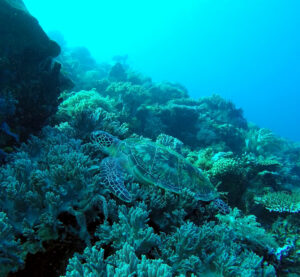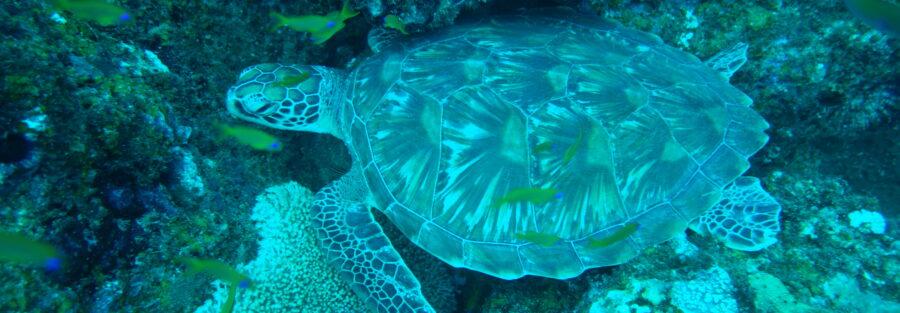When the International Union for Conservation of Nature (IUCN) updated its Red List to move the green sea turtle (Chelonia mydas) from Endangered to Leas
Dr. Kartik Shanker is Professor at the Centre for Ecological Sciences at Indian Institute of Science in Bangalore, India and is also Trustee of Dakshin Foundation and Editor of Current Conservation
“Green turtles have been protected by both national and international laws across the world for many decades,” says Shanker, who leads marine conservation research at ATREE and coordinates sea turtle monitoring programmes across India. “This means that many populations have been able to recover and now have stable or increasing populations. The data collected over decades provides the scientific basis for this reclassification.”

India’s Green Turtle Hotspots
In India, green turtles nest along the coasts of Gujarat, the Lakshadweep Islands, and the Andaman Islands, and graze on seagrass in the lagoons of the Lakshadweep. While long-term nesting data remains limited, the foraging populations of the Lakshadweep appear to be increasing — possibly due to better protection of nesting beaches in Sri Lanka or a decline in sharks, their natural predators.
Under the Wildlife Protection Act, green turtles are listed as a Schedule I species, offering them the highest level of legal protection. Forest Departments in Gujarat and the Andamans maintain hatcheries at nesting beaches, helping safeguard eggs and hatchlings from predation and human interference.
A Win — But With New Challenges
For conservationists, downlisting a species can be bittersweet. On one hand, it’s a victory— proof that protection works. On the other, it can risk complacency.
“Some conservationists believe that downlisting a species is a policy concern,” Shanker acknowledges. “However, it should be thought of as a conservation win- but one that brings new challenges. Many feel that sustainable and subsistence use may provide the right incentives for communities in the long term.”
Lessons from the Indian Ocean
Shanker believes the green turtle’s rebound underscores the resilience of marine ecosystems when habitats are safeguarded.
“Animal populations can rebound when their habitats are protected from development,” he explains. “Too often, we focus on the killing of individual animals- but even if there is short-term decline, populations can recover if their habitats are healthy. And this does not mean excluding people from these places, just certain kinds of activity like large-scale development.”
A Message of Hope
For a world weary of extinction headlines, this story brings rare optimism.
“I was delighted to hear this,” Shanker says. “It shows that conservation works and that long-term research can give us these insights. It allows us to imagine a different type of conservation… one that is inclusive of different peoples, cultures, and approaches.”
The recovery of the green turtle is a reminder that with long- term protection, local stewardship, and ecological humility, even the most threatened species can swim back from the brink.




